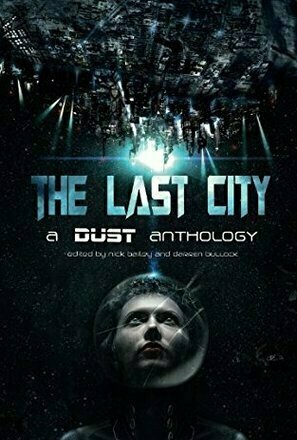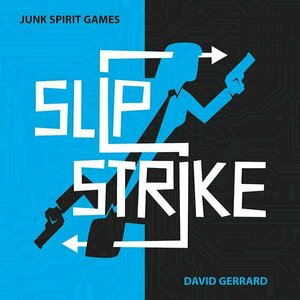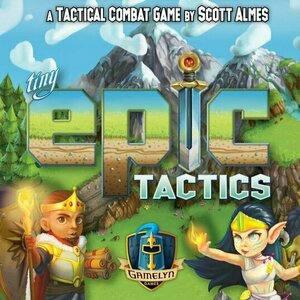Phil Leader (619 KP) rated The Last City in Books
Nov 18, 2019
The simple setup allows a number of current science fiction authors to stretch their imagination as they investigate the workings of the Last City. Each story looks at a different aspect - although most of them concentrate on the lower levels. A very noir private detective who is more than he seems. A secret route through the city for those who wish to disappear. Hunting for lost areas to loot and claim. A dangerous race across the outside where the stakes are high. There are also a couple of tales which show how the city appears to those who are beyond it.
The standard is high and every new story feels as fresh and interesting as the one before. All are packed with great ideas, enabling not only some stories dealing with straight forward science fiction themes but also ones covering social hierarchies and injustice, intolerance of 'outsiders' and the harsh tactics employed by totalitarian regimes to keep their populace in check.
I've tried to think of a science fiction short story collection I've enjoyed more, but there simply isn't one. I'd say there were plenty more stories to be told in this universe, perhaps another short story collection or novella wouldn't go amiss. Authors willing of course...

Uncertain Images: Museums and the Work of Photographs
Elizabeth Edwards and Sigrid Lien
Book
Almost all museums hold photographs in their collections, and museum professionals and their...
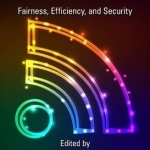
Spectrum Sharing in Wireless Networks: Fairness, Efficiency, and Security
Fei Hu, John D. Matyjas and Sunil Kumar
Book
Spectrum Sharing in Wireless Networks: Fairness, Efficiency, and Security provides a broad overview...
LeftSideCut (3776 KP) rated Saint Maud (2020) in Movies
May 28, 2021
A big chunk of the runtime is dedicated to the extremly authentic-feeling relationship between the titular Maud (Morfydd Clark), a live-in nurse and her patient Amanda (Jennifer Ehle), a retired dancer who is terminally ill with cancer. The sweet connection between the two of them is subtle but well realised, making it all the more uncomfortable when things take a sinister turn.
The religious premise is nothing new in this genre, and there is a bit of a Rosemary's Baby vibe going on, but it's execution is pretty much flawless. Maud's devotion to God is occasionlly terrifying, but her human doubt and her occasional shake in faith stops the narrative from going full blown religious fanatic, and instead touches upon mental health issues. For all of her preaching at Amanda, Maud is the one who is portrayed as lost and lonely, trying to suppress past trauma. Her character is certainly a sympathetic one.
95% of its runtime is a slow burn, one that is complimented by wonderful cinematography and a haunting music score. However, I'm struggling to think of a film in recent memory that escalates so severely in such a short space of time, when the other 5% finally hits. To say anymore would be stepping into spoiler territory, but I will say that it's beautifully horrifying to watch unfold, with a final shot that will be seared into my brain for a while.
Rose Glass has created a true horror masterpiece with Saint Maud. Her presence withing the horror genre is a welcome one, and I'm excited to see what she does next.
LeftSideCut (3776 KP) rated Underwater (2020) in Movies
Sep 11, 2020
I actually enjoyed Underwater for the most part, it's just that somewhere in the middle, it really starts to drag a bit, and I'm not even quite sure why - there's always something going on but it just lost me a bit.
Fortunately, the up and down middle act is book-ended by a very strong and tense first act, and one hell of a final third - no spoilers here but holy fuck!!!
The ending 'reveal' honestly elevates Underwater to loftier heights.
It also benefits from a good cast. Kristen Stewart has really grown on me in recent years and she's a fantastic lead in this. Always a pleasure to have Jessica Henwick and John Gallagher Jr. onscreen as well.
As per usual, I couldn't really get on with T.J. Miller - there's just something about that dude that always feels a bit too try hard - people liked him in Deadpool and now he's just typecast as the comic relief - Underwater doesn't really need comic relief.
There are some genuinely tense moments here and there, and the Aliens vibes are prominent - it's of course a few tiers under Aliens, but the bottom of the sea feels just as empty and otherworldly as space, and the creature designs are suitably eerie. The low light levels cover up a lot of CGI, so it never looks too fake either, with the exception of a couple of dodgy gore effects.
Underwater is a decent enough sci-fi-horror thriller that suffer a bit from pacing issues, but a good watch for those of you who like movie monsters.

Glitter Photo Editor – Sparkle Effects for Pics
Lifestyle and Photo & Video
App
Add custom galaxy lights and glitter effects to your photos! Use powerful bokeh effects and...
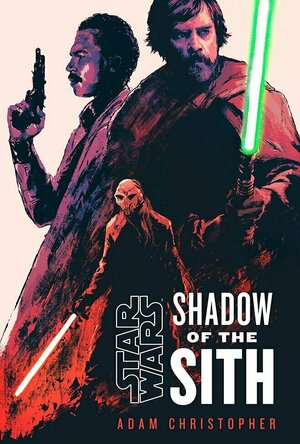
Shadow of the Sith
Book
Luke Skywalker and Lando Calrissian return in this essential novel set between Return of the Jedi...
Merissa (13580 KP) rated Festive Fugitive (Murder and Mistletoe #3) in Books
Oct 31, 2025
The story begins with Cesar asking his 'boss' for a final tattoo - that sounds okay, right? Well, it turns out, he gets a tattoo to celebrate the best job of the year, and his boss has been delaying it for two years. Oh, and I guess I should mention that his boss is also his sort-of adopted father, who has trained and tortured him to become a sociopathic assassin! When said boss is killed by someone pushed to their very limits, Cesar decides that the skinny, surely-soon-to-be-captured killer is his new boss, and helps him out every way he can. Let the fun begin.
This was a quick and easy read, surprisingly cute and fluffy in amidst all the murder and violence, with s3x on pretty much every page once Cesar and Eli get together. They become each other's safe space in a world where they haven't had that in far too long. Now, if I'm talking reality (which I'm not!), then their relationship is probably toxic as hell, but they are so happy in their little murder bubble, so why not!
My first festive book of the year, and I thoroughly enjoyed it. Definitely recommended by me.
** Same worded review will appear elsewhere. **
* A copy of this book was provided to me with no requirements for a review. I voluntarily read this book; the comments here are my honest opinion. *
Merissa
Archaeolibrarian - I Dig Good Books!
Oct 31, 2025
Purple Phoenix Games (2266 KP) rated Slip Strike in Tabletop Games
Jan 28, 2020
Slip Strike is a card game of bluffing, running, and managing your resources. The goal of the game is to get one hit on your opponent: the final strike. This could come from a bullet, a knife wound, or several other injuries that lead to your opponent’s demise. You each have ways of “slipping” out of trouble, but they are limited and certainly give your opponent the upper hand.
DISCLAIMER: We were provided a prototype copy of this game for the purposes of this review. These are preview copy components, and the final components will probably be different from these shown. Also, it is not my intention to detail every rule in the game, but to give our readers an idea of how the game plays. If you would like to read the rulebook, you may purchase the game through the publisher, back the game through the Kickstarter campaign, or through any retailers stocking it after fulfillment. -T
To setup, each player chooses a color (in this edition either blue or black) and receives the cards and spy-eeple (speeple?) of that color. Randomly place the location cards in a circle, or pentagon shape, to mark the map. Each player will select a location card at which they would like to begin the game, and reveal these simultaneously. Players will place their speeples on those locations and the game is setup and ready to play! For a more hardcore game, you may include one or two special Asset cards. We did that.
Slip Strike has no “turns” in the traditional sense. Instead, players will be choosing two cards to be played in succession. These cards are all from their hands and can include movement, teleportation, and weapon cards. Once the players have set their two cards in front of themselves, the cards in the first slot will be revealed simultaneously and resolved. Movement happens first, then any teleportations, then weapon effects.
If a player chose to play a movement card (left or right), simply move the speeple one space in that direction. Teleportation cards have the speeples moving directly to the location specified on the card. Weapon cards will have text on them referring to which spaces will be affected by the weapon – same space, one space away, or two spaces away usually. Should an enemy speeple reside in a space and is to be hit, the attacking player either wins with a successful strike or the defending player will need to “slip” to another location by playing (and therefore also discarding) a location card. This location card is now out of play and essentially is used as a countdown to their end, as players only have one card per location to use for a future slip.
Each card will also feature a cooldown number on it. This number reflects how many game rounds this card will need to sit on the table before it can be shuffled back into the player’s hand. I believe this to be the greatest aspect of this game: utilizing the cool downs effectively in order to exact the most damaging tactics for victory. Some more powerful cards will also show an asterisk in place of a cool down number. This means that the card must remain out of play for three or more rounds before entering the player’s hand (see photo below for the Flamethrower Asset).
The player that can guess their opponent’s next moves, play their corresponding cards, and whittle down the location slips the fastest will become the ultimate spy and someone I definitely do NOT want to play against.
Components. As previously mentioned, we were provided a prototype copy of Slip Strike, and the components may change during the Kickstarter campaign. That said, this game is a bunch of cards and two speeples. The cards look incredible and the art is spot-in with the theme. I quite enjoy the art style and it stays out of the way while playing, but is also interesting enough that you can spend lots of time inspecting it when playing against AP-prone opponents. The speeples are cool, and I am excited to see where they end up as a result of a successful Kickstarter campaign. All thumbs up from us on components!
The game play is super solid. We had no questions on how to play the game after reading the rules (which are super short – thank you!), and we were off to murder each other in seconds flat. What I really appreciate about this game is that anyone can be successful with it and really get into the theme. Do you want to play as Agent Smith from The Matrix? Go for it! Want to play as Hiro Nakamura from Heroes (when he could control his powers, that is)? Do it! Slip Strike is quick, super engaging, and gives me the feeling of high-stakes, adrenaline rushing, globetrotting secret agents that I have been looking for. If you are interested in picking this one up, consider backing it on Kickstarter, purchasing from the publisher directly, from your FLGS, or your favorite online retailer once this one hits market. You won’t regret it.
Purple Phoenix Games (2266 KP) rated Tiny Epic Tactics in Tabletop Games
Jul 8, 2021
Disclaimer: There are 5 different modes of play in Tiny Epic Tactics. In this review, I will be focusing on the 2-4 Player Competitive mode. There are also expansions for this game, but this review will not cover those materials. I also do not intend to rehash the entire rulebook, but rather provide a general overview of the rules and gameplay. For a more in-depth look at the rules, pick up a copy of the game from the publisher or at your FLGS. -L
Tiny Epic Tactics is a game of strategy and combat in which players will lead their teams of 4 heroes to fight opponents and attempt to gain control of a number of areas in the realm. To setup the game, unroll the map scroll and place the boxes onto their corresponding spaces. Randomly deal each player 1 Unit card from each class (Fighters, Wizards, Rogues, and Beasts), and give them 4 Unit tokens (meeples) in their chosen color, as well as tracker tokens for Health, Ammo, and Mana. Players will select their 4-space starting location, and will place all 4 of their Units on the map. Shuffle the deck of Tactic cards, and deal 2 to each player. Players will look at the cards and select one to keep in hand, discarding the other. Place the Tactic card deck in reach of all players, and place the Control Card nearby, with the 3 Flag tokens on the Start space. The game is ready to begin!
Over a series of rounds, players will take turns performing actions until either one player has had all of their Units captured or one player has captured the final Flag token (based on player count). The remaining players will take one final turn, and then the game ends, VPs are tallied, and the player with the most VPs is the winner! A game turn is made up of four steps, the first of which being to check for Majority Control. To see if you hold a Majority Control over any of the Control Areas on the map, count the number of Units in each triggered Control Area – if your Units make up the majority of Units in that area, advance the corresponding Flag token on the Control card, and if you do not hold the majority, then nothing happens. Once a Flag has been advanced to the final space, it is given to the player who holds Majority Control.
The next step of your turn is to take up to 3 actions with your Units. Possible actions are: Movement, Melee Attack, Missile Attack, and Cast a Spell. All Units have a printed value on their cards for Movement, as well as either Melee Attack, Missile Attack, or Spell Attack value, based on the Unit’s class. All of these actions are pretty self-explanatory, with a couple of extra components – use of Ammo/Mana, rolling dice, advantages/penalties based on Elevation, etc. – that make the gameplay strategic and challenging. The third turn step is to remove Weakened tokens (more on this later), and the final step is to draw a Tactic Card. Look at the card, and either keep it in hand or discard it – you may only ever have 2 Tactic Cards in hand. Play continues in this fashion until the end of the game is triggered, either when a single player has had all 4 of their Units captured or a player has taken the final Flag token. All other players take one more turn and then VPs are tallied for final scoring.
Ok so first thing I want to talk about is the use of boxes to create a 3D map. It is SO COOL. It’s such a unique idea, and one that I honestly haven’t seen before. The added aspect of Elevation in regards to movement and range for attacks really ups the strategic gameplay for me. Want to climb to a higher peak? Ok, that costs +1 movement. Don’t have enough movement to climb up this turn? Then you’re outta luck. Your strategy must always be changing based on where Units are located on the map.
Speaking of strategy, there are several different game elements that you can base your gameplay on – there is no ‘right’ way to play! Maybe you really want to focus on getting Flag tokens, so you try to protect that area and maintain majority at all costs. Maybe you don’t care about the Flags and it’s all about combat to you – you’re on the hunt for enemy Units and Area Control means nothing to you. Or maybe your aim is to complete your Tactic Cards, which will then allow you to perform a special/bonus action upon completion. There are different ways to play this game, and that makes it engaging and entertaining as you must constantly adapt your strategy while trying to figure out how your opponents are playing too!
Another neat element of Tiny Epic Tactics is that on each turn you only have 3 actions – and a single Unit may only perform one action per turn! So you can’t just spend all 3 actions moving and attacking with the same Unit, they must be spread across all of your heroes. That adds to the strategy because you have to set your Units up in advance for certain actions, but must quickly adapt based on the movements of your opponents. You can have a Unit perform a second, different, action on the same turn, but it will then become Weakened. When Weakened, a Unit cannot perform any actions on the next turn, and will have the Weakened condition removed at the end of said turn. Or, on your next turn, you may choose to pay 2 Health to remove the Weakened token and be able to act in that same turn. It’s kind of a gamble – how far are you willing to push your Units, and are you able to sacrifice their abilities for an entire turn in order to removed the Weakened token?
Let’s touch on components for a minute. These components are great, as is to be expected of the Tiny Epic series. The art is colorful and unique, the boxes are sturdy, the cards are nice and thick, and the wooden components are quality. No real gripes from me regarding production quality of this game! The gripe I do have is about the gameplay – specifically a 2-player game. When playing a 2-player game in competitive mode, the game end is triggered after 1 Flag token has been secured. This really can negate any need for strategy or player interaction, because each player starts near a Control Area, and can simply just move there and camp out to take the Flag. In my first games at a 2-player count, I found the gameplay to be kind of bland and not engaging because of this. At higher player counts, you have to interact with opponents on the map as you try to capture Control Areas. If at a 2-player count, you were required to secure 2 Flag tokens, or maybe just mandate that the secured Flag must be the one located in the center of the map, it would encourage more interactions between the players, and thereby elevate the strategy and gameplay in my opinion. Just something to consider.
Overall, I think that Tiny Epic Tactics is a solid game in this series. It is not my favorite by any means, but the gameplay and mechanics fill a gap left by the other Tiny Epics. The strategy required can be high-level, but the simplicity of the physical gameplay makes it feel accessible and inviting to all types of gamers. If you’re looking for a great 2-player Tiny Epic, maybe keep looking, but for a 3-4 player game, Tiny Epic Tactics hits the spot. Purple Phoenix Games gives it a tactical 8 / 12.
